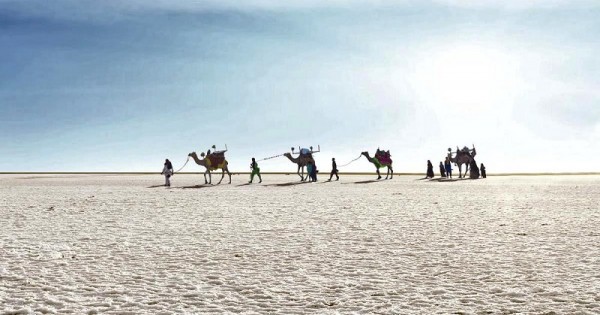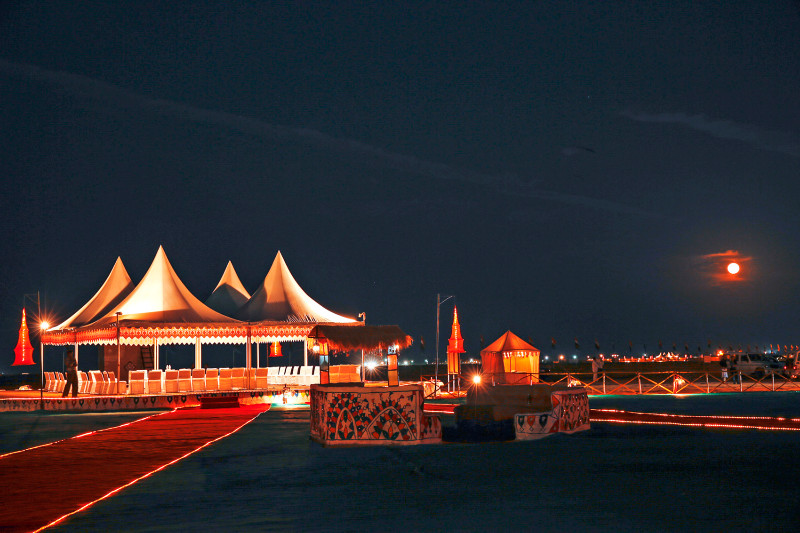


The Rann of Kutch, located in the state of Gujarat, India, is a unique and vast salt marsh that spans over 7,000 square kilometers. This region is not only ecologically diverse, but also culturally rich, making it a must-visit for those seeking to experience a unique blend of nature and heritage. The Rann of Kutch is known for its pristine white salt deserts, diverse birdlife, and its vibrant traditional festivals, like the Rann Utsav, which showcases the culture and heritage of the local communities. This region also has significant economic and strategic importance as it borders Pakistan and holds potential for oil and natural gas exploration. The Rann of Kutch is a true gem of India, and a visit here will leave a lasting impact on your mind, soul, and memories.
The history of the Rann of Kutch is as rich and diverse as the region itself. It is a story of epic battles, cultural richness, and natural splendor. The region has been a witness to numerous wars between the local kingdoms and the colonial powers. It has also been a home to many indigenous communities, who have lived in harmony with the harsh environment for centuries, preserving their traditional customs and practices.
The Rann of Kutch has been shaped by the forces of nature, and it has, in turn, shaped the people who call it home. The seasonal floods and droughts have shaped the lives of the people and have made them resilient, resourceful, and deeply connected to the land.
The Rann of Kutch has also been a site of great commercial importance, with its salt marshes providing a valuable source of salt, which was traded across the world. This region has seen the rise and fall of many powerful empires, who have left their mark on the landscape and the culture of the people.
Today, the Rann of Kutch continues to be a place of great natural beauty, cultural richness, and strategic importance. A visit to the Rann of Kutch will be a journey through time, a journey through the history of this incredible region.

To reach Rann of Kutch, you can follow these steps:
Once you reach Bhuj, you can take a local transportation to reach the Rann of Kutch.
The climate of Rann of Kutch is predominantly arid and dry with hot summers and cool winters. The best time to visit Rann of Kutch is during the winter months from November to February when the temperature is pleasant and the Rann is covered with a layer of salt crystals. This time of the year is also when the Rann Utsav, a famous cultural festival, is held, making it an ideal time to experience the rich culture of the region.
It's important to note that the Rann of Kutch is also prone to flooding during the monsoon season from June to September, making it difficult to visit during this time.
The ideal number of days to stay in Rann of Kutch would depend on your interests and travel plans. If you're looking to just visit the Rann and see its salt flats and experience the culture, then 2-3 days would be sufficient. However, if you're interested in exploring the surrounding areas, visiting local villages, and participating in local activities, then 4-5 days would be a good amount of time to spend.

There are several top attractions to explore in Rann of Kutch, here are some of the most popular ones:
1. Rann of Kutch: The main attraction of Rann of Kutch is the salt flat desert, which is a unique and breathtaking landscape that covers over 7,000 sq. km.
2. Rann Utsav: The Rann Utsav is a cultural festival that takes place in Rann of Kutch and is a must-visit for those interested in experiencing the rich culture of the region.
3. Bhujodi Village: This is a traditional weaving village known for its handcrafted textiles, which is a great place to shop for souvenirs.
4. Kala Dungar: This is the highest point in the Kutch region and offers panoramic views of the surrounding deserts and salt flats.
5. Mandvi Beach: This is a pristine and serene beach located near the city of Bhuj and is a great place to relax and soak in the sun.
6. Aaina Mahal: This is a palace located in Bhuj that was built in the 18th century and is known for its intricate carvings and beautiful mirrors.
7. Dholavira: This is an archaeological site that dates back to the Indus Valley Civilization and is known for its well-preserved ruins.
There are several accommodation options available in Rann of Kutch, ranging from budget-friendly to luxury options. Here are some recommendations based on different budgets:
1. Budget-friendly options: If you're looking for budget-friendly accommodation, you can consider staying in guesthouses or budget hotels in Bhuj or the surrounding villages.
2. Mid-range options: If you're looking for mid-range options, there are several good quality hotels and resorts in Bhuj that offer comfortable rooms and modern amenities.
3. Luxury options: If you're looking for luxury options, there are several high-end resorts in Rann of Kutch that offer premium services and facilities. Some resorts also offer unique tented accommodations, giving you a chance to experience the desert in style.
It's recommended to book your accommodation in advance, especially during the peak tourist season and during the Rann Utsav festival, as prices can be higher and rooms can fill up quickly.